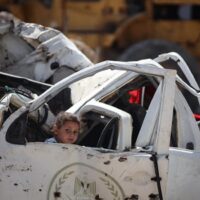LONDON: Gold rose on Wednesday, supported by investor concern over the violence across the Middle East and the resurgence of discomfort over the euro zone’s finances ahead of a key summit this week.
Crude oil arrested a two-day slide as worries about the turmoil in the Arab world, where pro-democracy protests are spreading from Libya to Yemen and Kuwait, outweighed reassurances from OPEC of ample spare capacity.
The euro fell below its recent four-month highs against the dollar, as investors shifted their attention away from the prospect of an imminent rate rise to the region’s debt problems, which leaders from the single currency bloc will discuss at a summit on Friday.
Euro-priced gold was set for a fourth daily rally, its strongest run in two months.
Gold priced in dollars rose 0.4 percent to $1,433.30 an ounce by 1224 GMT, reversing the net loss for the week, which would have been the first since late January.
COMEX April futures GCJ1 rose 0.5 percent to $1,433.90.
"I could see (the price) down another $10 but you have to continue buying," said ANZ head of metal sales Peter Hillyard.
"There are bigger macro issues, to do with economies and recessions and double-dips and the Middle East. There are enough bullish factors in play that if it isn’t one, it will be another and on balance, the market is looking for those bullish signs."
ETFs rise
Reflecting investor appetite for gold was another pickup in holdings of the metal in some of the world’s largest exchange-traded funds, which have risen by over 340,000 ounces so far this week to over 61 million ounces.
Gold has risen by nearly 10 percent in the last seven weeks, since protests in Tunisia and Egypt spread to other parts of the Middle East and North Africa, triggering a 20 percent rise in crude oil and raising concern over the chances of an oil-price shock to the global economic recovery.
The price hit a record $1,444.40 an ounce on Monday and has since retreated by about 1 percent from that level, in line with the drop in the oil price, which often trades in tandem with gold, especially if investors are seeking safe-haven assets.
"I feel it is consolidating, waiting for any lead out of Libya. We’ll see what happens on (Friday) prayer day around the Gulf, and then we’ll see whether or not there is need for concern. I think that’s the focus we have to follow," said Jonathan Barratt, managing director of Commodity Broking Services in Melbourne.
"If nothing happens on Friday, then I feel it will be a sigh of relief that the contagion won’t actually spread. As a result of that, if we don’t see it spread, then gold would come under pressure."
Tensions in Libya remained. Tanks and warplanes intensified their offensive against rebels on Tuesday, as the United States stressed that any no-fly zone to hobble Muammar Gaddafi’s forces had to have global backing.
Separately, a Chinese government adviser was quoted by local media reports as saying that the second largest consumer of the precious metal should use some of its $2.85 trillion foreign exchange reserves to buy more gold.
"Another supportive factor for gold demand and therefore gold prices are likely to be repeated calls for the diversification of China’s currency reserves," said Commerzbank analysts in a daily note.
Silver rallied for a fourth day, rising 0.6 percent to $36.22 an ounce, supported by the gains in gold and the ongoing backwardation across the silver futures curve, as well as by continued inflows into ETFs.
Platinum rose 0.6 percent to $1,813.62 an ounce, while palladium gained 0.9 percent to trade at $796.47. –Additional reporting by Lewa Pardomuan in Singapore



